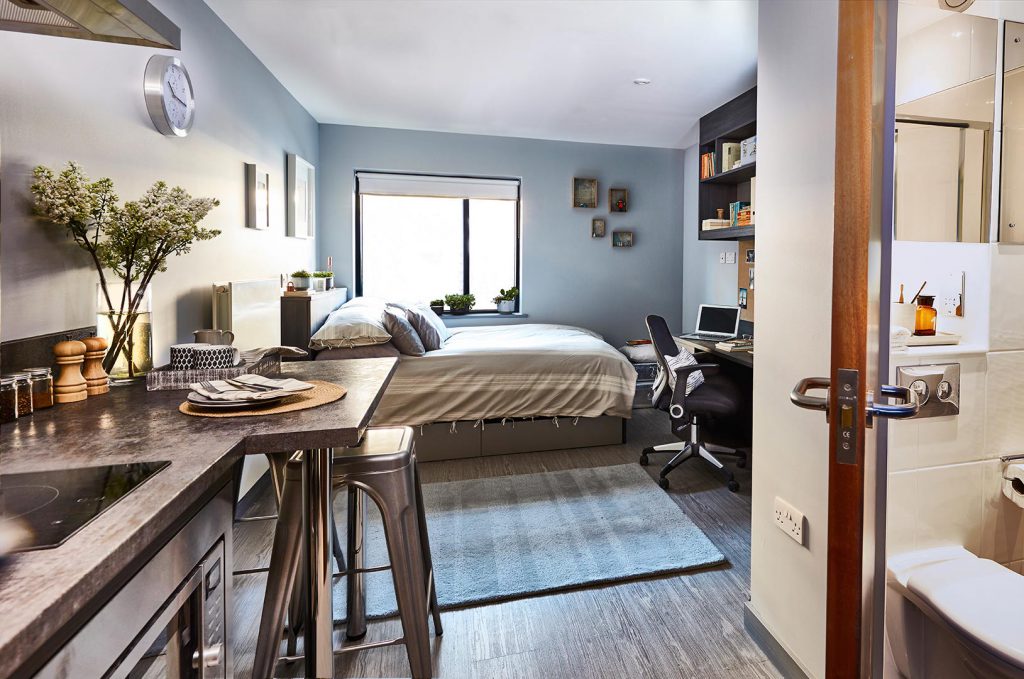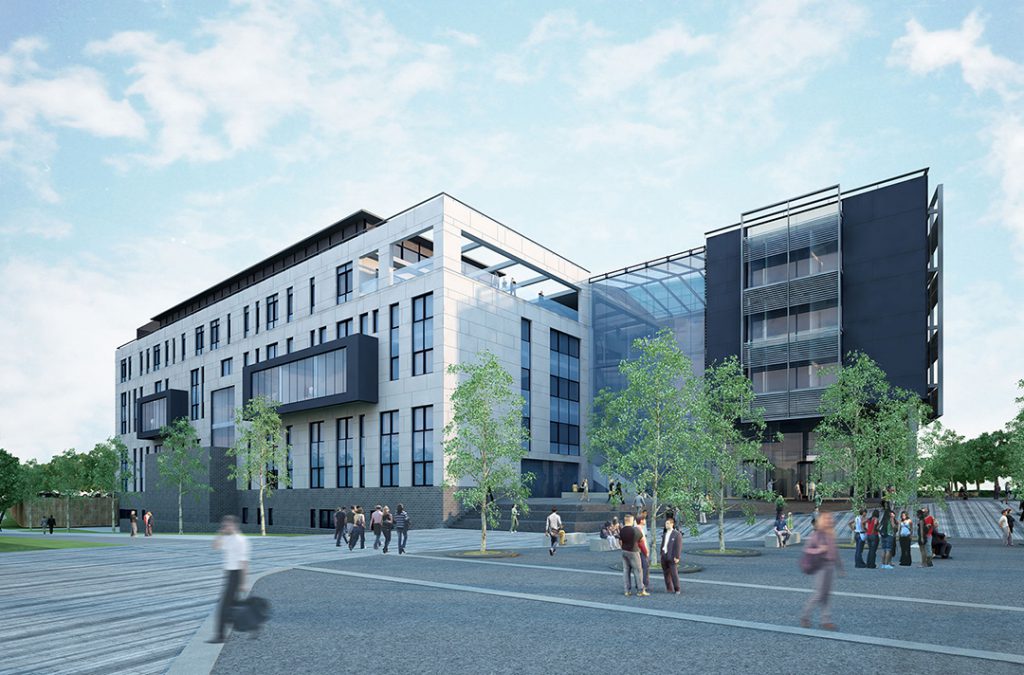Stride Treglown Director and sector lead for Universities, Matt Tarling, discusses how architecture and design in university spaces evolves with changing needs, and how modern student demands are having an effect on the set-up of the whole estate.
The evolution of teaching space
Teaching requirements have evolved dramatically in the last few years in terms of the spaces required, the teaching and learning methods used and the increasing reliance on technology to provide support. It has become more and more important to provide the flexibility to allow spaces to be changed easily. In our experience, the key is to create enough space to allow teaching staff to walk around group study furniture that can readily be re-arranged; it is highly unlikely that we will return to the ‘chalk and talk’ environment.

The demand for food and drink is also higher than ever; it would be difficult to find a new academic building on any university campus that doesn’t have a coffee shop either inside or within a 2 minute walk. This follows the increasing demand for group working spaces as university courses have changed to focus more on collaboration, with more meetings taking place in a café environment. The demand for USB points appears to mirror the demand for collaborative workspaces.
Meeting the needs of the modern student
Technology has had a significant impact on learning techniques. Millennials have been brought up in a very different environment to previous generations, with a far greater reliance upon technology. Most student surveys place a good WiFi signal at the top of their priorities, to the extent that it is now expected to be consistent from bedroom to teaching and learning spaces. Many universities are now placing WiFi boosters outside to allow students to utilise external learning spaces.
This demand has also had an effect on group study, with a far greater number of spaces requiring screens and connectivity for multiple devices and content sharing.
Blended learning environments in academic teaching facilities are more common and we are now designing student accommodation schemes in a different way. Although a desk is still required in student bedrooms it is no longer the sole place of study. The kitchen table has always been a popular alternative but students are preferring the opportunity to choose from a variety of environments that suit their personal needs. Not all students are the same and there is a much greater expectation by individuals that different environments for different tasks will be provided.
The death of the lecture theatre?
In our experience of working with more than 20 universities there is still demand for large lecture theatres. Undergraduate courses still need to impart significant quantities of information on large groups of students. However, we have still seen a greater emphasis on collaborative theatres that are more engaging for smaller groups of students such as more interactive furniture solutions for Harvard theatres.
Different courses place different demands on the lecturer and students. Arts and technology subjects tend to require more collaborative spaces and we have noticed that, upon opening these facilities, lecturers from other courses are requesting the use of the space for their own courses. Therefore, as more collaborative group working spaces are provided, yet more are required. We have seen a similar situation with breakout spaces, cafes and social learning areas.
How does this affect the humble student bedroom?
Student accommodation has changed significantly over the last 10 years, moving from an accommodation typology that was predominantly concerned with the en suite/non en suite debate towards a focus on the social and learning environments that support the student experience.
We have seen a move towards a blend of sleep, study and social space across both university and private sector developments.

While most university clients focus on more communal living arrangements there has been an explosion in the number of studio based student accommodation schemes in many cities. The conflict between what students want and what private developers are delivering is coming to a head in some cities and in some cases we are witnessing developers sacrificing bed numbers to provide additional communal space to ensure the scheme remains attractive to students. Bookable dining rooms, communal lounges, study booths, gyms and cinema rooms are more common features in private developments providing a variety of spaces in which students can socialise and study.
Pastoral care is more important than ever, with far greater issues relating to mental well-being impacting upon a student’s life. We are undertaking research with a number of clients, looking at how student accommodation is used trialling new models of accommodation to ensure that useful and meaningful facilities are provided to support a student’s life.
Clients that lead the way for innovation
University of Bath are one our most progressive clients in relation to student accommodation. The Quads development completed in September 2014 provides 708 micro sized bedrooms at 10m2 each (including en suite). In addition to the usual kitchen dining facilities shared between clusters of ten rooms we have included a study/common room facility shared between two cluster flats. The feedback from students has been extremely positive with students enjoying the ability to choose which spaces they use for eating, socialising and studying.

University of the West of England has embraced the principles of social learning environments for longer than many universities. The Faculty of Technology building (R2) completed in 2010 provided a series of break out areas and social learning facilities to support students within the facility. The success of these spaces prompted the faculty to invest in further refurbishment projects in some of their existing buildings.
Removing walls to some rooms along the corridors and installing a range of flexible furniture solutions within the newly refurbished spaces created a far more collaborative environment that encourages students to remain in the building after lectures to continue working together. We have developed these principles further in the new Faculty of Business and Law at the university, creating a large number of social learning break out spaces throughout the building to encourage students to utilise the whole space more efficiently. Spaces vary in size throughout the building with visual links back to the main atrium where the café is located close to the main entrance.

At the University of Salford we recently completed the New Adelphi building that houses the visual and performing arts departments. The building provides an array of formal and informal teaching and learning spaces. The facilities are arranged around a number of internal atrium spaces, providing vibrant places where the different creative communities can meet and interact. Creating opportunities for cross collaboration between departments was a key aspiration for the faculty from the outset of the project.
The large cafe at ground floor plus break out areas and flexible learning spaces located at numerous different levels of the building enable the university to offer unique educational opportunities for students and staff.
Summary
In our experience the need for meaningful engagement with students and other university stakeholders has never been more important. We have worked with over 30 universities during the last ten years and during this time we have developed a thorough understanding of the core challenges currently facing the higher education sector.
It is increasingly important to create meaningful communities that provide a supportive environment for students to sleep, study and socialise. Students need a range of spaces for learning that provide opportunities for new teaching activities. Working closely with universities, students and the private sector we are able to design new facilities that fulfil these needs.